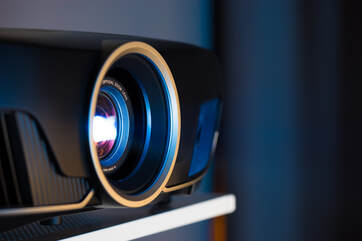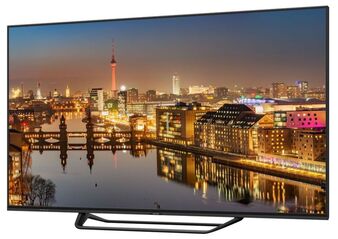|
Integrators have been hanging flat panel TVs and installing projectors for decades, but how many of those are calibrated? There is no doubt that every year TVs and projectors get better and better, and with HDMI 2.1 already here, we are about to see some truly unbelievable images. As great as these displays are, we are (and will always be) dealing with the same old dilemma: the display manufacturers have no idea what type of room the display will be in. They also can't predict every lighting condition, seating positions, what type of content the customer will be watching, nor what other gear may be in the system.  So, how do you ensure that the picture quality is optimized for each and every one of your clients? The answer is calibration. Calibration is a 100% custom service based on the client's unique environment and situation. No two rooms, systems, or people are the same, so why treat them as such? As I travel around and teach people about displays and calibration, I have been bringing up the infamous Game of Thrones episode that was "too dark" (read my take on the episode here). Every time the topic comes up, everyone in the room winces and has a nice chuckle about the amount of controversy this caused. Multiple integrators have told me that their customers were calling in, claiming that their new TV was broken! Here is my question: if the display the customer was watching had been calibrated, would there have even been a controversy? Or phone calls? Or truck rolls?  I have a personal client of mine who was unfortunately going through chemotherapy treatments. Her vision was severely sensitive and any bright light gave her a massive migraine. As a film buff, watching movies is one of her favorite hobbies, but because her TV was so bright she could not enjoy her favorite pastime. As a last-ditch effort before returning the TV to the retailer, she hired me to come over and check things out. During the calibration, we looked the test patterns together so I could tune the TV to her room and her vision. Two hours later, she was hugging me and crying because she could finally enjoy her movies without the migraines. Since then, she has referred me to at least five new clients. I love sharing this story because it really shows how important it is to understand not only a display's capabilities, but also the level of customer service you can potentially provide to your clients. These days most displays are pretty easy to calibrate. Just a few basic adjustments to a display can make a major difference in picture quality. Now that we have Autocal with CalMAN (a calibration software package by Portrait Displays), a full calibration can be done quickly and accurately. If you consider yourself a custom integrator, this a great way to separate yourself from your competitors!  My challenge to you is to find out if your competition offers calibration. Visit imagingscience.com/dealers, enter your city and see what is happening around you. You might be surprised by what you find. I recently hosted a webinar on this topic and had the founder of the ISF Joel Silver, HDTVTest's Vincent Teoh, and Portrait Displays Tyler Pruitt as guests. We had a great discussion about the industry and what we are excited to see over the next few years. Feel free to check that out here.  We host AVPro Academy and ISF courses all over the world several times throughout the year. Here you can learn more, in great detail, about this custom service and what you need to get started. If you have been before, but it has been a few years, maybe it's time for a refresher. Check out the dates and locations for these classes here. If you are not calibrating the TVs and projectors that you install, I'd be interested in hearing why. What is holding you back? Written by Jason Dustal, AVPro Head of Training and Education
0 Comments
Leave a Reply. |
Third Party Reviews & Articles
SIX-G Generator
Archives
July 2024
Categories |
|
|
© Copyright 2015-2023
Home Contact Us About Us Careers Warranty 2222 E 52nd Street North, Suite 101, Sioux Falls SD 57104 +1 605-330-8491 [email protected] |



 RSS Feed
RSS Feed